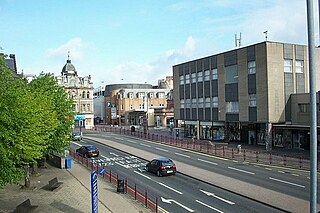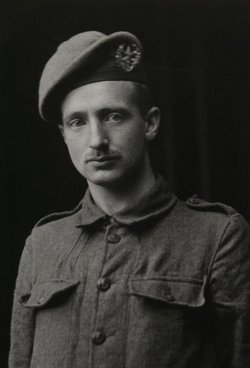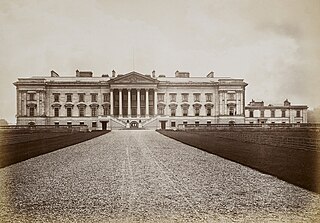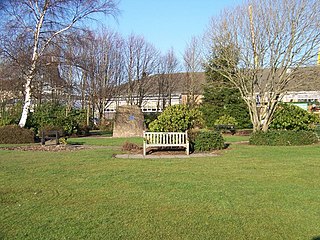
Hamilton is a large town in South Lanarkshire, Scotland. It serves as the main administrative centre of the South Lanarkshire council area. It sits 10 miles (16 km) south-east of Glasgow, 37 miles (60 km) south-west of Edinburgh and 74 miles (120 km) north of Carlisle. It is situated on the south bank of the River Clyde at its confluence with the Avon Water. Hamilton is the county town of the historic county of Lanarkshire and is the location of the headquarters of the modern local authority of South Lanarkshire.

Chatelherault Country Park is a country park in Hamilton, South Lanarkshire, Scotland. It is located in the village of Ferniegair, 1+1⁄4 miles from Hamilton town centre. On the west side of the park, runs the Avon, a tributary of the River Clyde.

Blantyre is a town and civil parish in South Lanarkshire, Scotland, with a population of 16,900. It is bounded by the River Clyde to the north, the Rotten Calder to the west, the Park Burn to the east and the Rotten Burn to the south.

Patrick Graham VC was born in St Michael's Parish, Dublin and was an Irish recipient of the Victoria Cross, the highest and most prestigious award for gallantry in the face of the enemy that can be awarded to British and Commonwealth forces.

Serjeant John MacLaren Erskine VC was a British Army soldier and a Scottish recipient of the Victoria Cross (VC), the highest and most prestigious award for gallantry in the face of the enemy that can be awarded to British and Commonwealth forces.

Hamilton Palace was a country house in Hamilton, South Lanarkshire, Scotland. It was the seat of the Dukes of Hamilton and is widely acknowledged as having been one of the grandest houses in the British Isles. The palace dated from the 14th century, was rebuilt in the Baroque style between 1684 and 1701 and was subsequently much enlarged in the Neoclassical style between 1824 and 1832.

Cameronian was a name given to a radical faction of Scottish Covenanters who followed the teachings of Richard Cameron, and who were composed principally of those who signed the Sanquhar Declaration in 1680. They were also known as Society Men, Sanquharians, and Hillmen. The Societies of Cameronians for the Maintenance of the Presbyterian Form of Worship were formed about 1681. There is no evidence that organised bands came from any parish or district to either Drumclog or Bothwell Bridge in June 1679. The United Societies were not in existence at that period. After 1688 it was different. The Covenanters were by then organised in their Societies which were again united in larger groups called "Correspondences."

The Cameronians (Scottish Rifles) was a rifle regiment of the British Army, the only regiment of rifles amongst the Scottish regiments of infantry. It was formed in 1881 under the Childers Reforms by the amalgamation of the 26th Cameronian Regiment and the 90th Perthshire Light Infantry. In 1968, when reductions were required, the regiment chose to be disbanded rather than amalgamated with another regiment, one of only two infantry regiments in the British Army to do so, with the other being the York and Lancaster Regiment. It can trace its roots to that of the Cameronians, later the 26th of Foot, who were raised in 1689. The 1881 amalgamation coincided with the Cameronian's selection to become the new Scottish Rifles.

Douglas is a village in South Lanarkshire, Scotland. It is located on the south bank of the Douglas Water and on the A70 road that links Ayr, on the West coast of Scotland, to Edinburgh on the East, around 12 miles south west of Lanark. The placename is of Gaelic origin, derived from the Old Gaelic dub and glais, meaning "dark stream", in reference to the Douglas Water. The Douglas family took this name when their ancestors settled here in the 12th century.

James Smith was a Scottish architect, who pioneered the Palladian style in Scotland. He was described by Colen Campbell, in his Vitruvius Britannicus (1715–1725), as "the most experienced architect of that kingdom".

The Hamilton Mausoleum is a mausoleum located in Hamilton, South Lanarkshire, Scotland. It was the resting place of the family of the Dukes of Hamilton. The mausoleum is Category A listed. Built in the grounds of the now-demolished Hamilton Palace, its high stone vault holds the record for the longest echo within any man-made structure in the world, taking 15 seconds for the sound of a slammed door to fade. In 2014 the record was thought to have been broken at the Inchindown oil storage tanks in the Scottish Highlands, however this was classed as a reverberation, rather than an echo.
In countries whose armies are organised on a regimental basis, such as the army of the United Kingdom, a regimental museum is a military museum dedicated to the history of a specific army regiment.

Bothwellhaugh was a Scottish coal mining village, which housed Hamilton Palace Colliery workers and their families. Locals referred to the village as The Pailis, and it was located near the towns of Motherwell, Bellshill and Hamilton, in Lanarkshire. The village was occupied from the mid-1880s, until it was demolished in 1965.

The Battle of Bothwell Bridge, or Bothwell Brig' took place on 22 June 1679. It was fought between government troops and militant Presbyterian Covenanters, and signalled the end of their brief rebellion. The battle took place at the bridge over the River Clyde between Hamilton and Bothwell in Lanarkshire, Scotland. The battlefield has been included in the Inventory of Historic Battlefields in Scotland and protected by Historic Scotland under the Historic Environment (Amendment) Act 2011.

Winston Barracks was a British Army base, located 2 miles (3.2 km) east of Lanark, Scotland. It was situated in the fork of the A73 and A70 trunk roads, close to Lanark Racecourse. The site was decommissioned in 1994, and some of the buildings have been renovated as part of a housing development.
The 156th Brigade was an infantry brigade formation of the British Army. The brigade saw active service in both the First and the Second World Wars with the 52nd (Lowland) Infantry Division.

Hamilton Barracks was a military installation in Hamilton, South Lanarkshire.

The Cameronians War Memorial is a war memorial in Kelvingrove Park in the west of Glasgow, Scotland, to the north of Kelvingrove Art Gallery and Museum. It commemorates the service of the Cameronians regiment in the First and Second World Wars. The memorial includes a bronze sculpture representing a machine gun emplacement, with three human figures. It became a Category B listed building in 1988.

The Victoria Road drill hall is a former military installation in Glasgow.
The 1st Lanarkshire Rifle Volunteers was a Scottish Volunteer unit of the British Army. Originally raised in Glasgow as part of the Highland Light Infantry from 1859, it later became a battalion of the Cameronians. During World War I it served on the Western Front and in Ireland. Converted into an anti-aircraft regiment just before World War II, it served during The Blitz and in the campaign in North West Europe, and continued in air defence role in the postwar years until 1955.




















